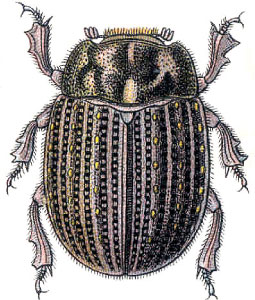| Dinocephalus ornatus | |
|---|---|
 | |
 | |
| Scientific classification | |
| Kingdom: | Animalia |
| Clade: | Euarthropoda |
| Class: | Insecta |
| Order: | Coleoptera |
| Family: | Cerambycidae |
| Subfamily: | Lamiinae |
| Genus: | Dinocephalus |
| Species: | D. ornatus |
| Binomial name | |
| Dinocephalus ornatus Péringuey, 1899 [1] | |
Dinocephalus ornatus is a species of beetle in the family Cerambycidae. It was described by Louis Péringuey in 1899. It is known from Tanzania, Mozambique, Somalia, Malawi, South Africa, Ethiopia, and Zambia. It contains the varietas Dinocephalus ornatus var. nigroannulatus. [2]

Beetles are a group of insects that form the order Coleoptera, in the superorder Endopterygota. Their front pair of wings are hardened into wing-cases, elytra, distinguishing them from most other insects. The Coleoptera, with about 400,000 species, is the largest of all orders, constituting almost 40% of described insects and 25% of all known animal life-forms; new species are discovered frequently. The largest of all families, the Curculionidae (weevils) with some 70,000 member species, belongs to this order. Found in almost every habitat except the sea and the polar regions, they interact with their ecosystems in several ways: beetles often feed on plants and fungi, break down animal and plant debris, and eat other invertebrates. Some species are serious agricultural pests, such as the Colorado potato beetle, while others such as Coccinellidae eat aphids, scale insects, thrips, and other plant-sucking insects that damage crops.

Louis Albert Péringuey MSc was a South African entomologist who specialised in Coleoptera and prehistory.

Tanzania, officially the United Republic of Tanzania, is a country in eastern Africa within the African Great Lakes region. It borders Uganda to the north; Kenya to the northeast; Comoro Islands at the Indian Ocean to the east; Mozambique and Malawi to the south; Zambia to the southwest; and Rwanda, Burundi, and the Democratic Republic of the Congo to the west. Mount Kilimanjaro, Africa's highest mountain, is in north-eastern Tanzania.











